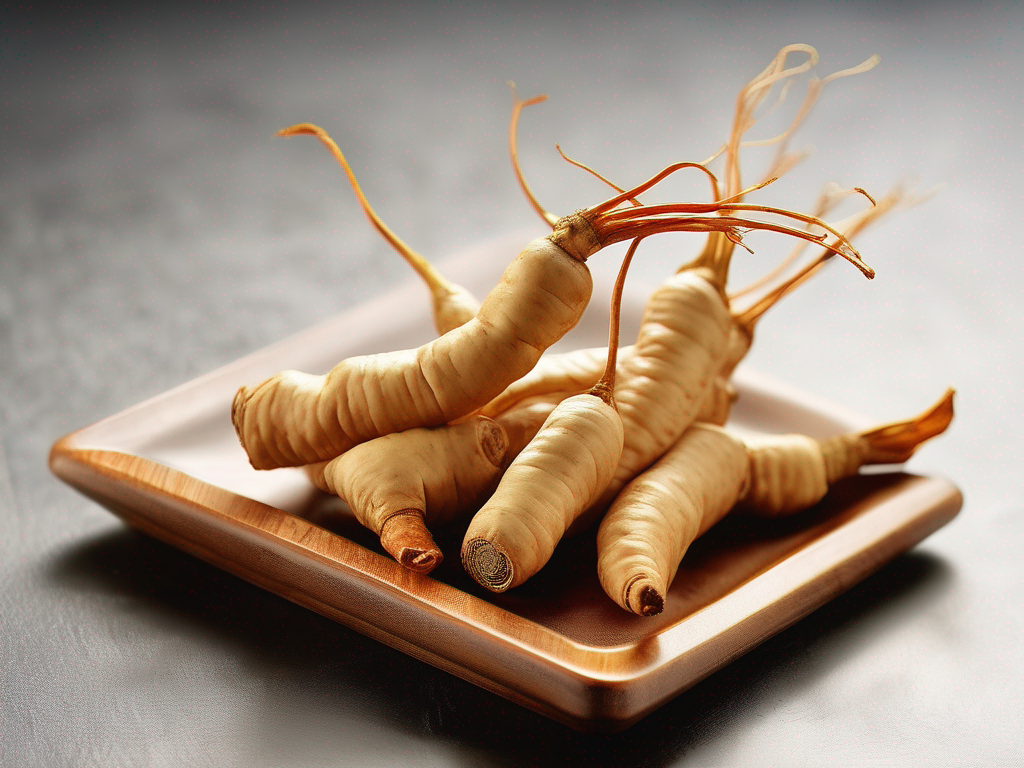
Signs of Ginseng Spoilage and How to Prevent It
Get Your Free Food Safety Cheat Sheet
30 most common foods with instant answers. Print it and stick it on your fridge—completely free!
Signs of Ginseng Spoilage and How to Prevent It
Ginseng, a popular herb known for its numerous health benefits, is often used in traditional medicine and culinary practices. However, like any other perishable food item, ginseng can spoil if not stored and handled correctly. In this blog post, we will discuss the signs of ginseng spoilage and provide practical tips on how to prevent it, ensuring that you can enjoy its benefits safely. (Ginseng)
Understanding the Shelf Life of Ginseng
Before diving into the signs of spoilage, it's essential to understand the shelf life of ginseng. Fresh ginseng roots can last for a few weeks when stored properly, while dried ginseng can have a longer shelf life of several months to a year. However, improper storage conditions can lead to spoilage, affecting the quality and safety of the herb.
Signs of Ginseng Spoilage
-
Change in Color and Texture:
- Fresh ginseng roots may develop mold or dark spots on the surface.
- Dried ginseng can become discolored or develop a slimy texture.
-
Unpleasant Odor:
- Spoiled ginseng may emit a foul or musty smell, indicating bacterial growth.
-
Mold Growth:
- Visible mold growth on the surface of ginseng is a clear sign of spoilage.
-
Sliminess:
- When ginseng feels slimy to the touch, it is likely spoiled and should be discarded.
-
Off Taste:
- Consuming spoiled ginseng may result in a bitter or rancid taste, indicating degradation of the herb.
Preventing Ginseng Spoilage
To ensure the longevity and quality of your ginseng, follow these practical tips to prevent spoilage:
-
Proper Storage:
- Store fresh ginseng in a cool, dark place with good ventilation to prevent mold growth.
- Dried ginseng should be kept in an airtight container away from moisture and sunlight.
-
Regular Inspection:
- Check ginseng regularly for any signs of spoilage, such as mold, discoloration, or unusual odors.
-
Avoid Contamination:
- Handle ginseng with clean hands and utensils to prevent contamination with bacteria or mold spores.
-
Use-by Dates:
- Follow the expiration date on packaged ginseng products and consume them before they expire.
-
Proper Hygiene:
- Wash fresh ginseng thoroughly before use to remove any dirt or debris that may harbor bacteria.
-
Quality Sources:
- Purchase ginseng from reputable suppliers to ensure quality and freshness.
Conclusion
In conclusion, recognizing the signs of ginseng spoilage is crucial for maintaining its quality and safety. By following proper storage practices, conducting regular inspections, and practicing good hygiene, you can prevent ginseng from spoiling prematurely. Remember to trust your senses – if ginseng looks, smells, or tastes off, it's best to err on the side of caution and discard it. Enjoy the benefits of ginseng by ensuring that it remains fresh and free from spoilage. (Ginseng)
Authoritative Food Safety References
These agencies and university labs inform every tip and health precaution we publish.
USDA FoodKeeper – Cold Storage Guidelines
Official refrigerator, freezer, and pantry timelines maintained by the U.S. Department of Agriculture.
Visit USDA FoodKeeperFDA Produce Safety Rule & Grower Guidance
Field-to-fridge handling practices that prevent contamination of fruits, vegetables, and leafy greens.
Visit FDA Produce SafetyCDC Foodborne Illness Prevention Hub
Surveillance-backed guidance on pathogens, symptoms, and steps to reduce foodborne illness risk.
Visit CDC Food SafetyUC Davis Postharvest Technology Center
University research detailing optimal storage atmospheres for produce after harvest.
Visit UC Davis PostharvestPenn State Extension – Home Food Preservation & Safety
Peer-reviewed extension bulletins on safe canning, chilling, and reheating practices.
Visit Penn State ExtensionGet Your Free Food Safety Cheat Sheet
30 most common foods with instant answers. Print it and stick it on your fridge—completely free! Want more? Upgrade to the complete guide with 70+ foods.
Scan your food directly and get instant safety info using our AI-powered camera feature.